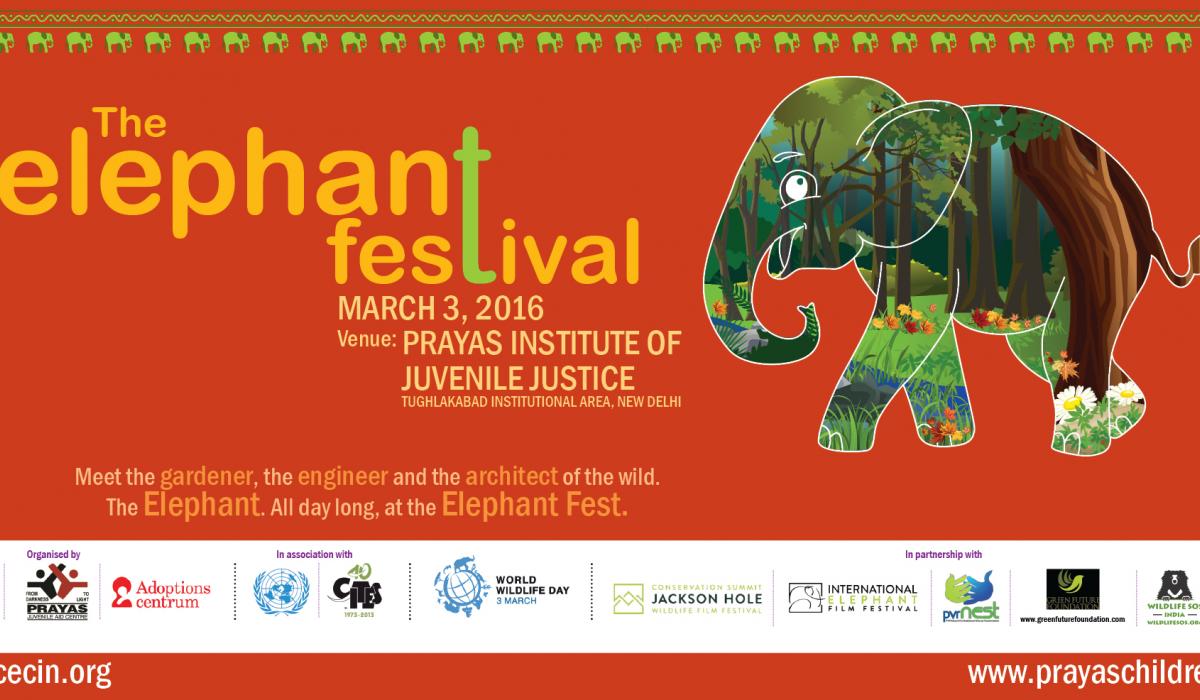The Elephant Festival – Celebrating World Wildlife Day

CEC organised The Elephant Festival, on March 3, 2016 to mark the World Wildlife Day, March 3. Exciting activities were held at the fest: Films, Workshops, Competitions, Quiz and Fun. Elephants are keystone species and are like the gardeners, engineers and architects of many ecosystems. Without elephants many other species would suffer as they are a vital link in the ecosystem. The loss of elephants from one particular site would mean that all biological interactions and ecosystem processes, in which they are involved, would also be lost.
The festival in pics:
https://www.facebook.com/media/set/?set=a.1572083923110454.1073741842.1378405642478284&type=3
The Asian or Asiatic elephant (Elephas maximus) is the only living species of the genus Elephas and distributed in Southeast Asia from India in the west to Borneo in the east. About 60% of the Asian elephant population is in India. Despite its relevance, in India this wonderful animal is placed in the list of endangered animals by IUCN since the numbers have significantly declined by 50% over the past 50 or 60 years. Once widespread in India, the species is now restricted to four general areas: northeastern India, central India, northwestern India, and southern India. One of the foremost causes of their deaths is habitat loss or its fragmentation, human hunting, and fragmentation. Over the past few years, Indian elephants have been put to death in large numbers and one of the reasons for this much hunting is the commercial trading of elephants ivory. To protect the elephant, Project Elephant (PE) was launched by the Government of India in the year 1992 as a Centrally Sponsored Scheme. Though slow, the wild elephant population, according to Govt of India estimates, has risen to 29391-30711 in 2012 as compared to 27657-27682 in 2007. The all India enumeration of wild population of elephants in the country is carried out at every five year interval.
Do children, the carriers of knowledge for a better future, know all this? Not as much as needed. There exists a need to tell the children about the role and significance of this majestic animal to maintain a healthy ecosystem, a reason why it is so revered also in several cultures and traditions around the festival. The conservation of the species, thus, is of paramount significance. The goal is to introduce and then, connect the children to the world of nature and create a love for biodiversity.
The Elephant Festival stepped in to meet this need.
Activities
An exciting mix of films, workshops, competitions and informative and fun activities were designed for the children participating in the festival. Five films were screened at the festival. The films dealt with issues such as poaching of elephants, conservation measures, the role of the elephant in the ecosystem, and their exploitation by humans, among others. The Workshop introduced the children to the world of elephants with Here Comes the Elephant, a role play on elephant themes in My Teeth and Other Stories and understanding elephant issues with the Roll the Dice game. The Competitions involved the childen further in elephant themes with a Painting Competition, an Animal Pictionary, and the Act for the Elephant on-the-spot skit competition. An engaging Quiz on All Things Elephant challenged the children while a fun Picture Booth throughout the session will see them become mask-ed animals.
Festival Partners
The Festival was organised by the Centre for Environment Communication (CEC) and Prayas Institute for Juvenile Justice in partnership with: The Jackson Hole Wildlife Film Festival, The International Elephant Film Festival, PVR Nest, Green Future Foundation, Wildlife SOS and Magic Bus, and is being presented in association with United Nations and CITES to celebrate the World Wildlife Day, March 3.
